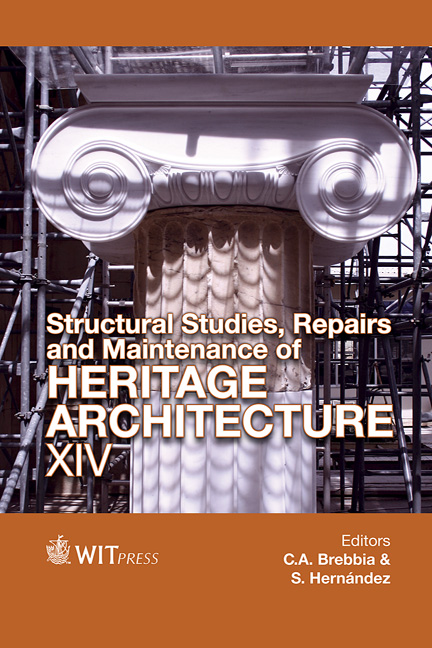Masonry Strain In The Vall D’Aràn Churches
Price
Free (open access)
Transaction
Volume
153
Pages
13
Page Range
443 - 455
Published
2015
Size
754 kb
Paper DOI
10.2495/STR150371
Copyright
WIT Press
Author(s)
J. Lluis i Ginovart, S. Coll-Pla, M. Lopez-Piquer
Abstract
Located in the north face of the Spanish Pyrenees, it is in the Vall d’Aràn where we find an important ensemble of Romanesque churches built between the 12th and the 16th century. Today those buildings suffer deformations of over 10% from their original shape.
Puig i Cadafalch (1908) pointed out that, initially, the basilica roof had a wooden truss that transmitted the weight vertically. Years later, these were substituted by barrel vaults, supported on non-monolithic circular section masonry columns, which meant deformations on the buildings.
The level of deformation depends on the stereotomy of the pieces and on the vaults building system. This article is about the different constructive systems used in the churches and the quantification of the geometric deformation in relation with them.
After having done the constructive sections of the lay outs of the Santa Maria d’Unha (12th century), Santa Maria de Arties (12–13th century), Santa Maria de Bossost (13th century) and Sant Andreu de Salardú (14th century) churches (between the years 2011 and 2014), the next step has been to study the deformation. These buildings allow us to study the constructive evolution in a period of four centuries.
Keywords
Romanesque, Vall d’Aràn, strain vault




